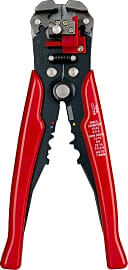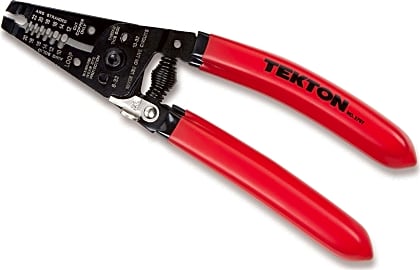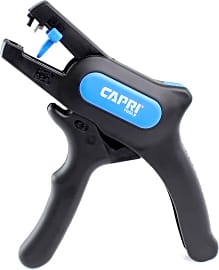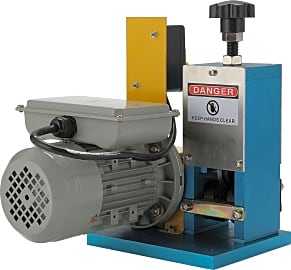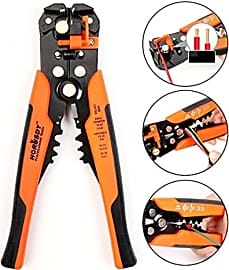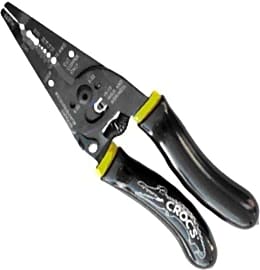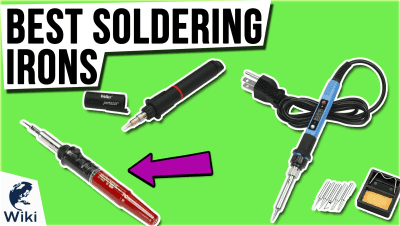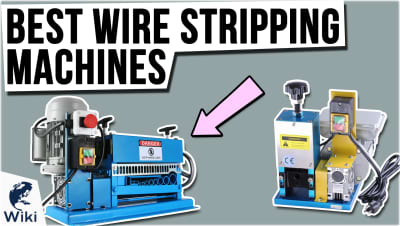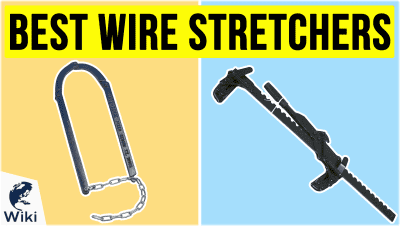The 9 Best Wire Strippers

This wiki has been updated 35 times since it was first published in October of 2016. Although your front teeth will do in a pinch, you always run the risk of chipping the enamel. Next time you have some electrical work to do around the house, try one of these wire strippers instead. We've included models appropriate for both home DIYers and those who make a living with their tools, all purpose-built to give you better control and more accurate snipping, stripping, and crimping. When users buy our independently chosen editorial picks, we may earn commissions to help fund the Wiki.
Editor's Notes
April 08, 2019:
When it comes to long-lasting quality, it's still tough to beat the Irwin Vise-Grip and the Klein Tools Kurve, which are both tough enough for use by professionals who rely on their tools. They're comparably priced, but the Irwin model is the more feature-heavy of the two, making it the go-to for those who appreciate multi-functionality. And while neither is terribly expensive, we did find a couple of models that are slightly lower priced that would make adequate additions to a home toolkit. These include the Tekton 7-Inch and the Horusdy Stripping Tool. You shouldn't expect to use and abuse them, but for occasional jobs, they're fine. Lastly, we decided to add the Co-Z Portable. It's a machine, not a hand tool, so it's not going to be necessary in all cases; however, if you're working with large quantitates of copper wire, it's an option to consider.
A Positively Amazing Negative Charge
First of all, keep in mind that electrons themselves are tiny, negatively charged particles with an almost inconceivably small mass.
It only takes a quick glance around us to see how important advanced technology has become in today's world. Everywhere we look is evidence of generations of engineers working to improve the quality of life for all of us. And so many products, whether cutting-edge mobile devices or simple floor lamps, rely on one phenomenon to operate: electricity.
Electricity is the movement and interaction of free electrons. First of all, keep in mind that electrons themselves are tiny, negatively charged particles with an almost inconceivably small mass. Every atom has a certain number of them orbiting it in its most stable form, predetermined by the electromagnetics of chemistry laid out in the periodic table. Based on their potential number of valence electrons, metallic elements to the left of the table have a higher conductivity than nonmetals. This means they are more receptive to free electrons forming and breaking bonds with them. When multiple conductive molecules are bonded together, they're able to pass these negatively-charged particles from one nucleus to the next.
When free electrons are introduced to a completed circuit, they essentially begin to flow like water through a hose around the low-valence nuclei. When lightning strikes, for example, a powerful explosion of electrons travels out of the sky and meets a stream of energy from the ground, where there are abundant positively-charged particles to absorb the extra negative charge.
While humans had been roughly aware of the concept of electricity for at least a few hundred years, in the mid-1700s Benjamin Franklin would spur much study of how electric current works, paving the way for centuries of development with his famed kite experiment. In modern times, the incredible phenomenon of electricity manifests itself in microscopic devices, operating switches as small as 14 nanometers wide or smaller, allowing for ultra-fast processing speeds. But no matter how advanced the device, at some point it utilizes that most basic of electrical components: the wire.
Why And How Wire?
A basic wire consists of two parts: the insulator and the conductor. The insulator, commonly rubber or nylon, is a non-conductive sleeve around the inner conductor, which is usually made of copper. Other substances like plastic or vinyl can also be used to protect the other components of the wire. Often, the conductor will be a number of smaller individual wires rather than one single piece of copper.
Often, the conductor will be a number of smaller individual wires rather than one single piece of copper.
And why is copper the darling of electrical wiring? It's a metal with much higher tensile strength than comparably conductive elements. That means it can be rolled into small gauges and made into long wires and still retain its strength. It won't crack or easily break and short out like other metals such as aluminum would.
The actual power cable that comes out of your appliance and plugs into the wall isn't just one wire, though. Nor is the sound cable connecting your guitar to the amplifier. Because there must be a completed circuit in order to release the flow of electrons, most cables consist of two or three wires inside — positive, negative, and ground, in case of a power surge, as you'll find on many larger appliances. Other types of cable are comprised of one inner conductor surrounded by a braided sheath that acts as the carrier for the negative charge, as in the case of guitar cables.
This brings up an interesting point about how electricity actually travels down a conductor. While it operates conceptually like water through a hose, that description is actually inside-out. Remember, the electrons that make up the charge are jumping from one orbit to another. When the nuclei of the conductor's molecules are bound by strong forces, as in a wire, the electrons flow down the outside of the bonded protons and neutrons, like water flowing down the outside of the hose. That's why guitar cables, which transmit very sensitive, low-power signals, can use a second sheath around the inner core as the return wire. The electrons surround the inner layer of opposite-charged particles as they flow, compared to a power cable where two currents run in opposite directions.
Wire To Wire, From Start To Finish
If you've worked with electronics at all, whether building, repairing, or just setting them up, you've seen the prevalence of wires. When it does come time to replace a wall plug, car window switch, or light fixture, it's going to take certain tools and precautions to get the job done safely and effectively. After all, electricity can be volatile; a messy job can turn ugly if 110 volts are applied and sparks start to fly. And if you're replacing connections under the hood of your car, the last thing you need is to lose ignition while humming down the road at 70 mph.
Others include a mechanical function to grip and then strip the insulation from the wire automatically.
So, you'll need the right equipment. Electrical tape and a soldering iron are great additions to your toolbox. To make your life safer and easier, a durable, reliable, easy-to-use wire strippers are also a great investment. They're generally simple tools; it's not uncommon to see a decades-old specimen in great working condition. What they provide is a helpful means to remove the insulation from many wires.
Some of them are simple, with one joint like that of a pair of pliers, and a variety of sizes of holes for stripping wire of various widths. Others include a mechanical function to grip and then strip the insulation from the wire automatically. These are especially effective for contractors who cut a lot of wire — after a while, your wrists and hands will thank you for the mechanical advantage. Because they have more moving parts and often a spring, they can be more prone to failure, but there are definitely reliable models available from which to choose. No matter which you decide on, make sure to keep it clean, well-oiled, and rust-free, and you'll end up with a quality tool for years to come.



